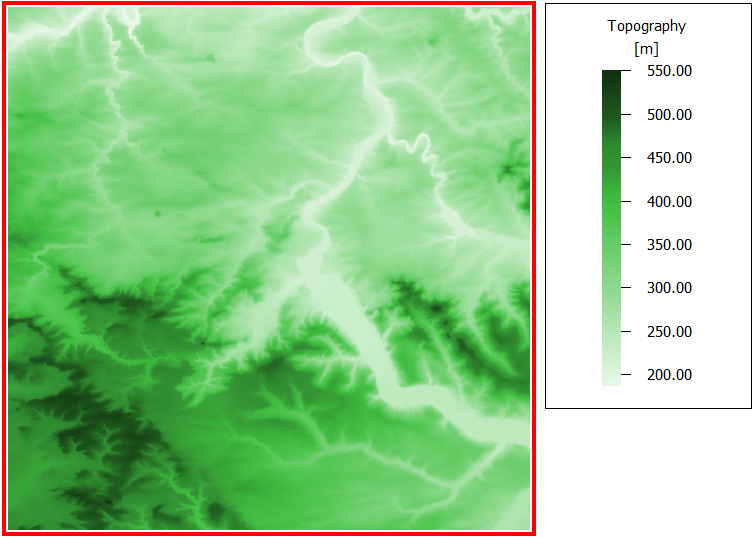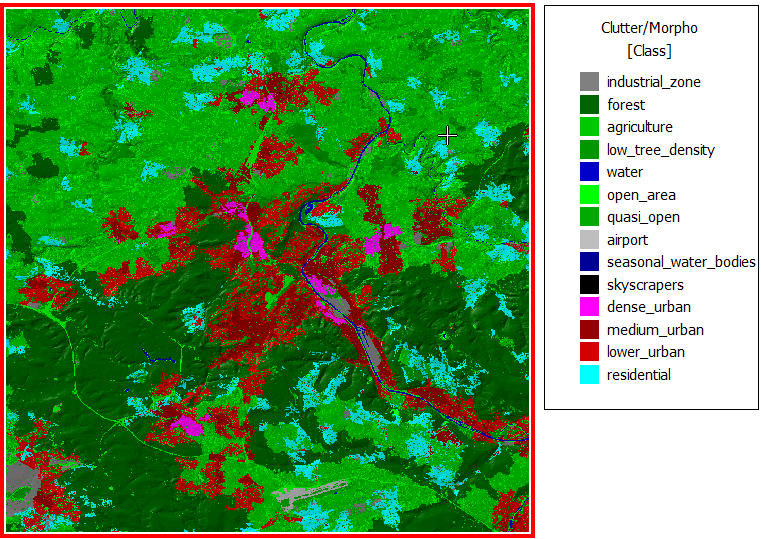Rural Satellite Coverage
Calculate rural satellite coverage from a geostationary communications satellite.
Model Type

Figure 1. The topography (elevation) database used to determine the satellite coverage.

Figure 2. The clutter/morpho database used to determine the satellite coverage.
Sites and Antennas
A single site, denoted Satellite 1, is located at a height of 36000 km and is a geostationary satellite. The antenna has an EIRP1 of 90 dBm at a carrier frequency of 2 GHz.
Computational Method
Results
Propagation results are computed at a prediction height of 1.5 m and include power coverage of each transmitting antenna and path loss. The power coverage (power received by a hypothetical isotropic antenna) is shown in Figure 3.

Figure 3. Received power by a hypothetical isotropic antenna.